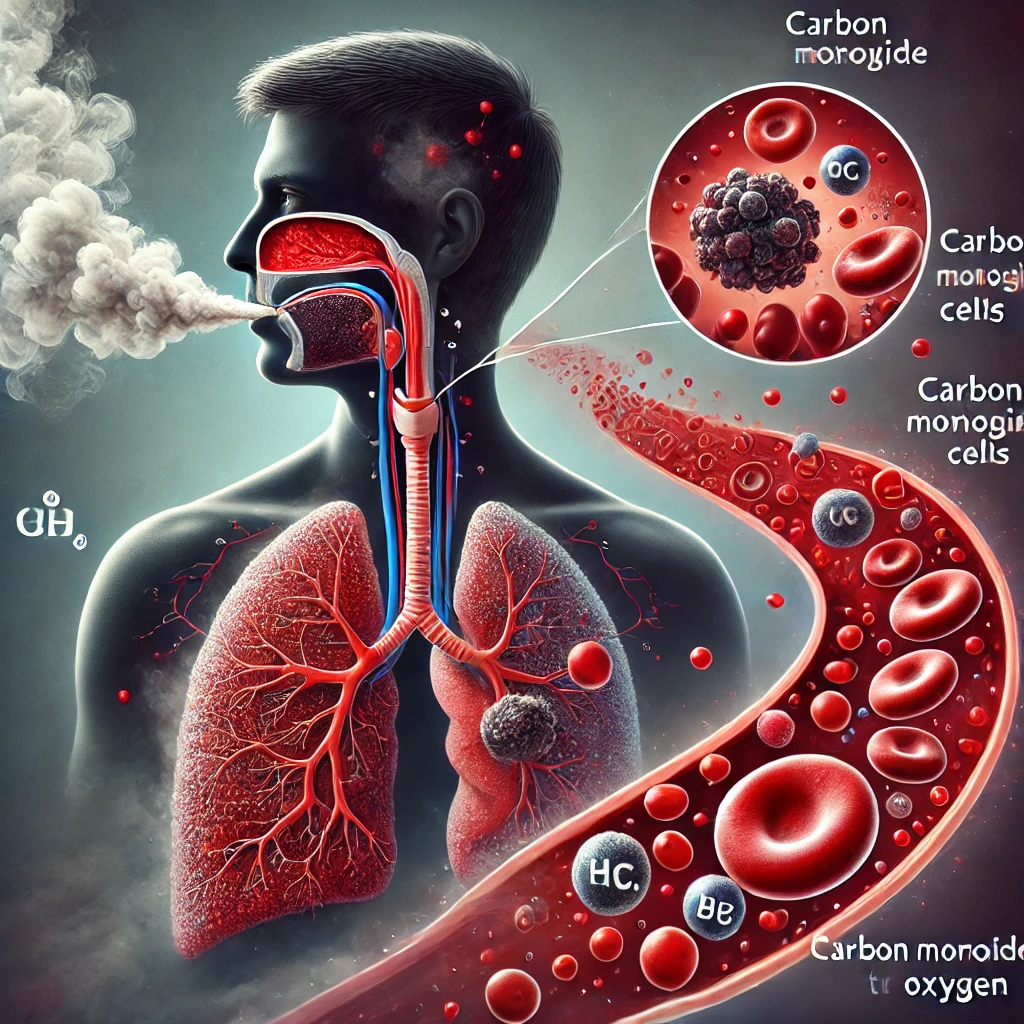Living with Osteoarthritis : Tips for Managing Pain and Staying Active
Osteoarthritis (OA) is a common joint disorder that affects millions of people worldwide. Often referred to as the “wear and tear” arthritis, it can significantly impact quality of life and daily activities. In this comprehensive guide, we’ll explore the ins and outs of osteoarthritis, from its causes and symptoms to the latest treatment options and lifestyle modifications that can help you manage this condition effectively.
Understanding Osteoarthritis
Osteoarthritis is the most prevalent form of arthritis, characterized by the breakdown of cartilage in joints (Centers for Disease Control and Prevention [CDC], 2020). This degenerative process leads to pain, stiffness, and reduced mobility in affected areas. While OA can occur in any joint, it most commonly affects the hands, knees, hips, and spine.
The Mechanics of OA
In a healthy joint, cartilage acts as a cushion between bones, allowing for smooth movement. In osteoarthritis, this cartilage begins to wear away, leading to bone-on-bone contact, inflammation, and the formation of bone spurs (osteophytes).
As the disease progresses, it can cause changes in the entire joint structure, including the underlying bone, ligaments, and surrounding muscles (Martel-Pelletier et al., 2016).
Risk Factors and Causes
While the exact cause of osteoarthritis isn’t fully understood, several risk factors have been identified:
- Age: The risk of developing OA increases with age, with most cases occurring in individuals over 50 (Zhang & Jordan, 2010).
- Gender: Women are more likely to develop OA, especially after menopause (Srikanth et al., 2005).
- Obesity: Excess weight puts additional stress on weight-bearing joints, increasing the risk of OA (Bliddal et al., 2014).
- Joint injuries or overuse: Previous joint injuries or repetitive stress on joints can lead to OA development (Roos, 2005).
- Genetics: Some people may inherit a tendency to develop OA (Warner & Valdes, 2016).
- Occupation: Jobs that involve repetitive joint stress may increase the risk of OA (Palmer, 2012).
Understanding these risk factors can help individuals take proactive steps to prevent or manage the condition more effectively.
Recognizing the Symptoms
The symptoms of osteoarthritis typically develop slowly and worsen over time. Common signs include:
- Pain in the affected joint, especially during or after movement
- Stiffness, particularly after periods of inactivity or upon waking
- Tenderness when pressure is applied to the joint
- Loss of flexibility and reduced range of motion
- Grating sensation or creaking sound (crepitus) when using the joint
- Bone spurs, which may feel like hard lumps around the affected joint
- Swelling in some cases, due to soft tissue inflammation around the joint
It’s important to note that symptoms can vary greatly from person to person and may fluctuate in severity over time (Hunter et al., 2014).
Diagnosis and Assessment
If you suspect you have osteoarthritis, consult a healthcare professional for a proper diagnosis. The diagnostic process typically involves:
- Medical history review
- Physical examination
- Imaging tests (X-rays, MRI)
- Blood tests (to rule out other forms of arthritis)
Early diagnosis is crucial for effective management and to slow the progression of the disease (Sakellariou et al., 2017).
Treatment Options
While there is no cure for osteoarthritis, various treatment options can help manage symptoms and improve quality of life. Treatment plans are often tailored to individual needs and may include:
Non-Pharmacological Approaches
- Exercise: Regular physical activity is crucial for maintaining joint flexibility and strengthening supporting muscles. Low-impact exercises like swimming, cycling, and tai chi are particularly beneficial (Fransen et al., 2015).
- Weight management: Losing excess weight can significantly reduce stress on weight-bearing joints and alleviate symptoms (Messier et al., 2013).
- Physical therapy: A physical therapist can teach exercises to improve flexibility, strength, and balance, as well as proper body mechanics to reduce joint stress (Page et al., 2011).
- Occupational therapy: An occupational therapist can suggest modifications to daily activities and recommend assistive devices to reduce joint strain (Kjeken et al., 2011).
- Hot and cold therapy: Applying heat or cold to affected joints can help manage pain and stiffness (Brosseau et al., 2003).
Pharmacological Interventions
- Pain relievers: Over-the-counter pain medications like acetaminophen can help manage mild to moderate pain (Zhang et al., 2008).
- Nonsteroidal anti-inflammatory drugs (NSAIDs): Both oral and topical NSAIDs can reduce pain and inflammation (Derry et al., 2016).
- Duloxetine: This medication, originally developed for depression, has shown efficacy in managing chronic OA pain (Wang et al., 2015).
- Intra-articular injections: Corticosteroid or hyaluronic acid injections directly into the affected joint can provide temporary relief (Jüni et al., 2015).
Surgical Options
In severe cases where conservative treatments are ineffective, surgical interventions may be considered:
- Joint replacement surgery: This involves replacing the damaged joint with an artificial one, most commonly performed for hip and knee OA (Skou et al., 2015).
- Osteotomy: This procedure involves reshaping the bone to relieve pressure on the affected joint (Brouwer et al., 2014).
- Joint fusion: In some cases, particularly for small joints in the hands and feet, fusing the bones can provide pain relief (Batra et al., 2016).
Lifestyle Modifications and Self-Management
Living with osteoarthritis often requires adopting lifestyle changes to manage symptoms and maintain overall health:
- Maintain a balanced diet: A diet rich in anti-inflammatory foods, such as fruits, vegetables, and omega-3 fatty acids, may help reduce inflammation and support joint health (Shen et al., 2012).
- Stay active: Regular exercise is crucial for maintaining joint flexibility and muscle strength. Aim for a combination of aerobic, strength training, and flexibility exercises (Bennell & Hinman, 2011).
- Use assistive devices: Tools like canes, walkers, or ergonomic utensils can help reduce stress on affected joints during daily activities (Rao et al., 2014).
- Practice good posture and body mechanics: Proper alignment and movement techniques can help reduce joint stress (Gatchel et al., 2007).
- Manage stress: Chronic pain can be stressful, and stress can exacerbate pain. Techniques like mindfulness meditation or cognitive-behavioral therapy can be helpful (Kwekkeboom & Bratzke, 2016).
- Get adequate sleep: Good sleep hygiene is essential for pain management and overall health (Vitiello et al., 2009).
Emerging Treatments and Research
The field of osteoarthritis research is dynamic, with new treatments and approaches constantly being explored:
- Stem cell therapy: While still experimental, stem cell treatments show promise in regenerating cartilage tissue (Pers et al., 2015).
- Platelet-rich plasma (PRP) injections: This treatment uses a concentrated form of the patient’s own blood platelets to potentially stimulate healing (Shen et al., 2018).
- Gene therapy: Researchers are exploring ways to deliver therapeutic genes to joints to reduce inflammation and promote cartilage repair (Evans et al., 2018).
- Nanotechnology: This emerging field may lead to new drug delivery systems and materials for joint repair (Tran et al., 2019).
Conclusion
Osteoarthritis is a complex condition that requires a multifaceted approach to management. By understanding the disease, recognizing its symptoms, and actively engaging in treatment and self-management strategies, individuals with OA can significantly improve their quality of life. Remember, each person’s experience with osteoarthritis is unique, and what works best may vary from person to person.
If you’re living with osteoarthritis, work closely with your healthcare team to develop a comprehensive management plan tailored to your needs. Stay informed about the latest research and treatment options, but always consult with a medical professional before trying new therapies. With the right approach, it’s possible to live an active, fulfilling life despite the challenges of osteoarthritis.
Written by : Farokh Shabbir
References
Centers for Disease Control and Prevention. (2020). Osteoarthritis (OA). Retrieved from https://www.cdc.gov/arthritis/basics/osteoarthritis.htm
Evans, C. H., Ghivizzani, S. C., & Robbins, P. D. (2018). Gene delivery to joints by intra-articular injection. Human Gene Therapy, 29(1), 2-14.
Fransen, M., McConnell, S., Harmer, A. R., Van der Esch, M., Simic, M., & Bennell, K. L. (2015). Exercise for osteoarthritis of the knee. Cochrane Database of Systematic Reviews, (1).
Gatchel, R. J., Peng, Y. B., Peters, M. L., Fuchs, P. N., & Turk, D. C. (2007). The biopsychosocial approach to chronic pain: Scientific advances and future directions. Psychological Bulletin, 133(4), 581-624.
Hunter, D. J., Schofield, D., & Callander, E. (2014). The individual and socioeconomic impact of osteoarthritis. Nature Reviews Rheumatology, 10(7), 437-441.
Jüni, P., Hari, R., Rutjes, A. W., Fischer, R., Silletta, M. G., Reichenbach, S., & da Costa, B. R. (2015). Intra-articular corticosteroid for knee osteoarthritis. Cochrane Database of Systematic Reviews, (10).
Kjeken, I., Darre, S., Smedslund, G., Hagen, K. B., & Nossum, R. (2011). Effect of assistive technology in hand osteoarthritis: A randomised controlled trial. Annals of the Rheumatic Diseases, 70(8), 1447-1452.
Kwekkeboom, K. L., & Bratzke, L. C. (2016). A systematic review of relaxation, meditation, and guided imagery strategies for symptom management in heart failure. Journal of Cardiovascular Nursing, 31(5), 457-468.
Martel-Pelletier, J., Barr, A. J., Cicuttini, F. M., Conaghan, P. G., Cooper, C., Goldring, M. B., Goldring, S. R., Jones, G., Teichtahl, A. J., & Pelletier, J. P. (2016). Osteoarthritis. Nature Reviews Disease Primers, 2, 16072.
Messier, S. P., Mihalko, S. L., Legault, C., Miller, G. D., Nicklas, B. J., DeVita, P., Beavers, D. P., Hunter, D. J., Lyles, M. F., Eckstein, F., Williamson, J. D., Carr, J. J., Guermazi, A., & Loeser, R. F. (2013). Effects of intensive diet and exercise on knee joint loads, inflammation, and clinical outcomes among overweight and obese adults with knee osteoarthritis: The IDEA randomized clinical trial. JAMA, 310(12), 1263-1273.
Page, C. J., Hinman, R. S., & Bennell, K. L. (2011). Physiotherapy management of knee osteoarthritis. International Journal of Rheumatic Diseases, 14(2), 145-151.
Palmer, K. T. (2012). Occupational activities and osteoarthritis of the knee. British Medical Bulletin, 102(1), 147-170.
Pers, Y. M., Ruiz, M., Noël, D., & Jorgensen, C. (2015). Mesenchymal stem cells for the management of inflammation in osteoarthritis: State of the art and perspectives. Osteoarthritis and Cartilage, 23(11), 2027-2035.
Rao, S., Nene, A., & Moore, A. (2014). Assistive devices for people with rheumatic diseases. The Indian Journal of Rheumatology, 9(2), 81-86.
Roos, E. M. (2005). Joint injury causes knee osteoarthritis in young adults. Current Opinion in Rheumatology, 17(2), 195-200.
Sakellariou, G., Conaghan, P. G., Zhang, W., Bijlsma, J. W. J., Boyesen, P., D’Agostino, M. A., Doherty, M., Fodor, D., Kloppenburg, M., Miese, F., Naredo, E., Porcheret, M., & Iagnocco, A. (2017). EULAR recommendations for the use of imaging in the clinical management of peripheral joint osteoarthritis. Annals of the Rheumatic Diseases, 76(9), 1484-1494.
Shen, C. L., Smith, B. J., Lo, D. F., Chyu, M. C., Dunn, D. M., Chen, C. H., & Kwun, I. S. (2012). Dietary polyphenols and mechanisms of osteoarthritis. The Journal of Nutritional Biochemistry, 23(11), 1367-1377.
Shen, L., Yuan, T., Chen, S., Xie, X., & Zhang, C. (2018). The temporal effect of platelet-rich plasma on pain and physical function in the treatment of knee osteoarthritis: Systematic review and meta-analysis of randomized controlled trials. Journal of Orthopaedic Surgery and Research, 13(1), 16.
Skou, S. T., Roos, E. M., Laursen, M. B., Rathleff, M. S., Arendt-Nielsen, L., Simonsen, O., & Rasmussen, S. (2015). A randomized, controlled trial of total knee replacement. New England Journal of Medicine, 373(17), 1597-1606.











